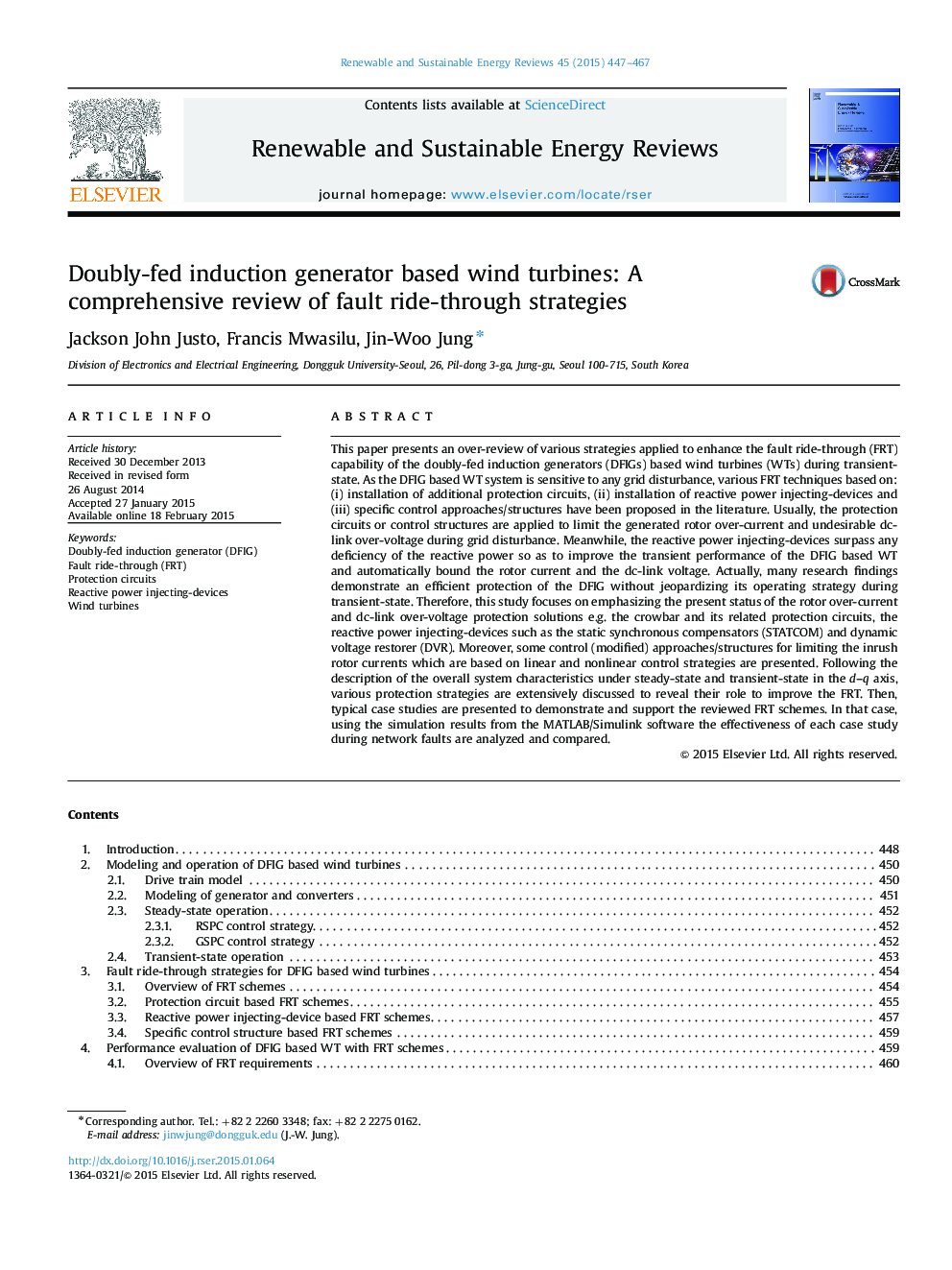| Article ID | Journal | Published Year | Pages | File Type |
|---|---|---|---|---|
| 1750061 | Renewable and Sustainable Energy Reviews | 2015 | 21 Pages |
This paper presents an over-review of various strategies applied to enhance the fault ride-through (FRT) capability of the doubly-fed induction generators (DFIGs) based wind turbines (WTs) during transient-state. As the DFIG based WT system is sensitive to any grid disturbance, various FRT techniques based on: (i) installation of additional protection circuits, (ii) installation of reactive power injecting-devices and (iii) specific control approaches/structures have been proposed in the literature. Usually, the protection circuits or control structures are applied to limit the generated rotor over-current and undesirable dc-link over-voltage during grid disturbance. Meanwhile, the reactive power injecting-devices surpass any deficiency of the reactive power so as to improve the transient performance of the DFIG based WT and automatically bound the rotor current and the dc-link voltage. Actually, many research findings demonstrate an efficient protection of the DFIG without jeopardizing its operating strategy during transient-state. Therefore, this study focuses on emphasizing the present status of the rotor over-current and dc-link over-voltage protection solutions e.g. the crowbar and its related protection circuits, the reactive power injecting-devices such as the static synchronous compensators (STATCOM) and dynamic voltage restorer (DVR). Moreover, some control (modified) approaches/structures for limiting the inrush rotor currents which are based on linear and nonlinear control strategies are presented. Following the description of the overall system characteristics under steady-state and transient-state in the d–q axis, various protection strategies are extensively discussed to reveal their role to improve the FRT. Then, typical case studies are presented to demonstrate and support the reviewed FRT schemes. In that case, using the simulation results from the MATLAB/Simulink software the effectiveness of each case study during network faults are analyzed and compared.
